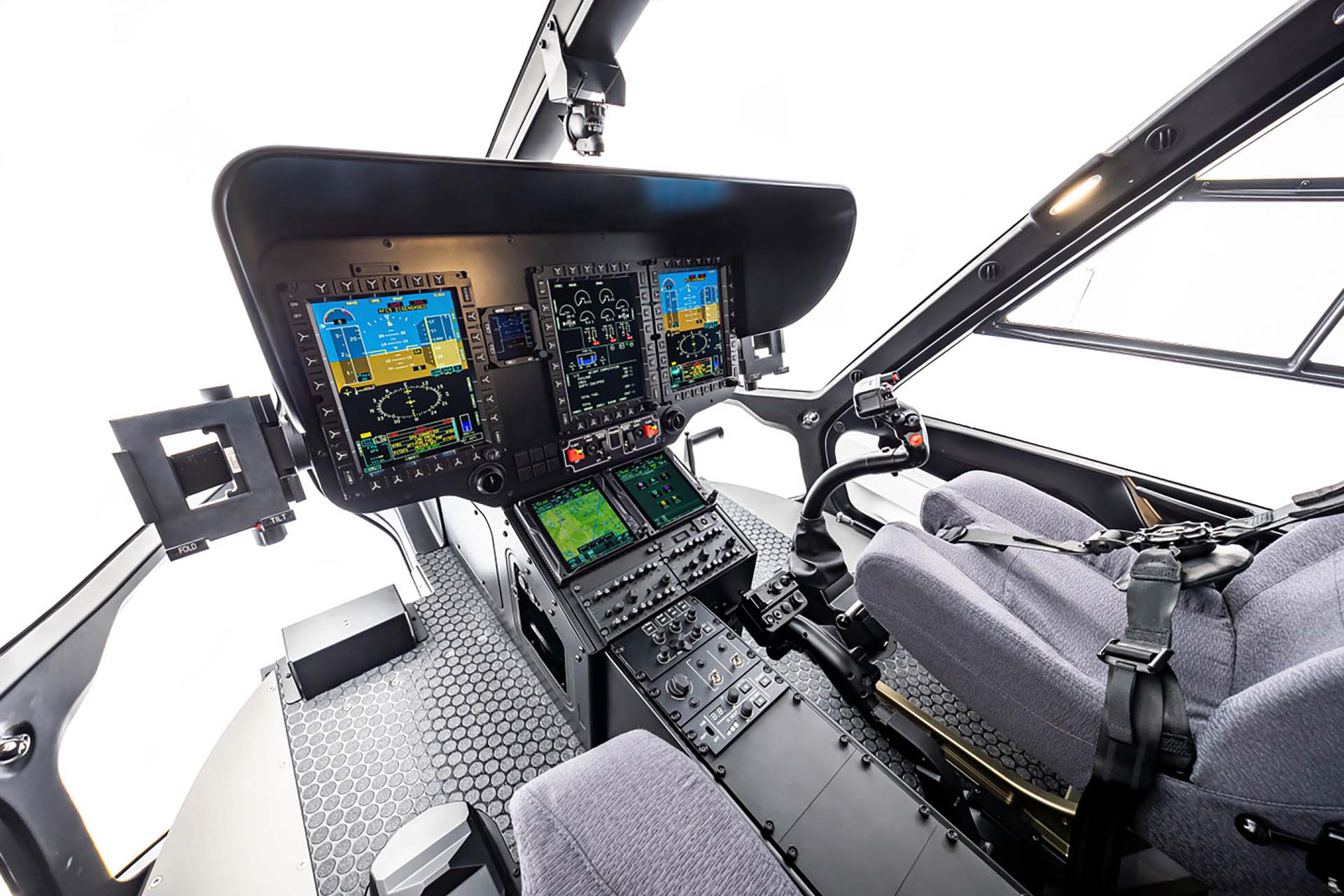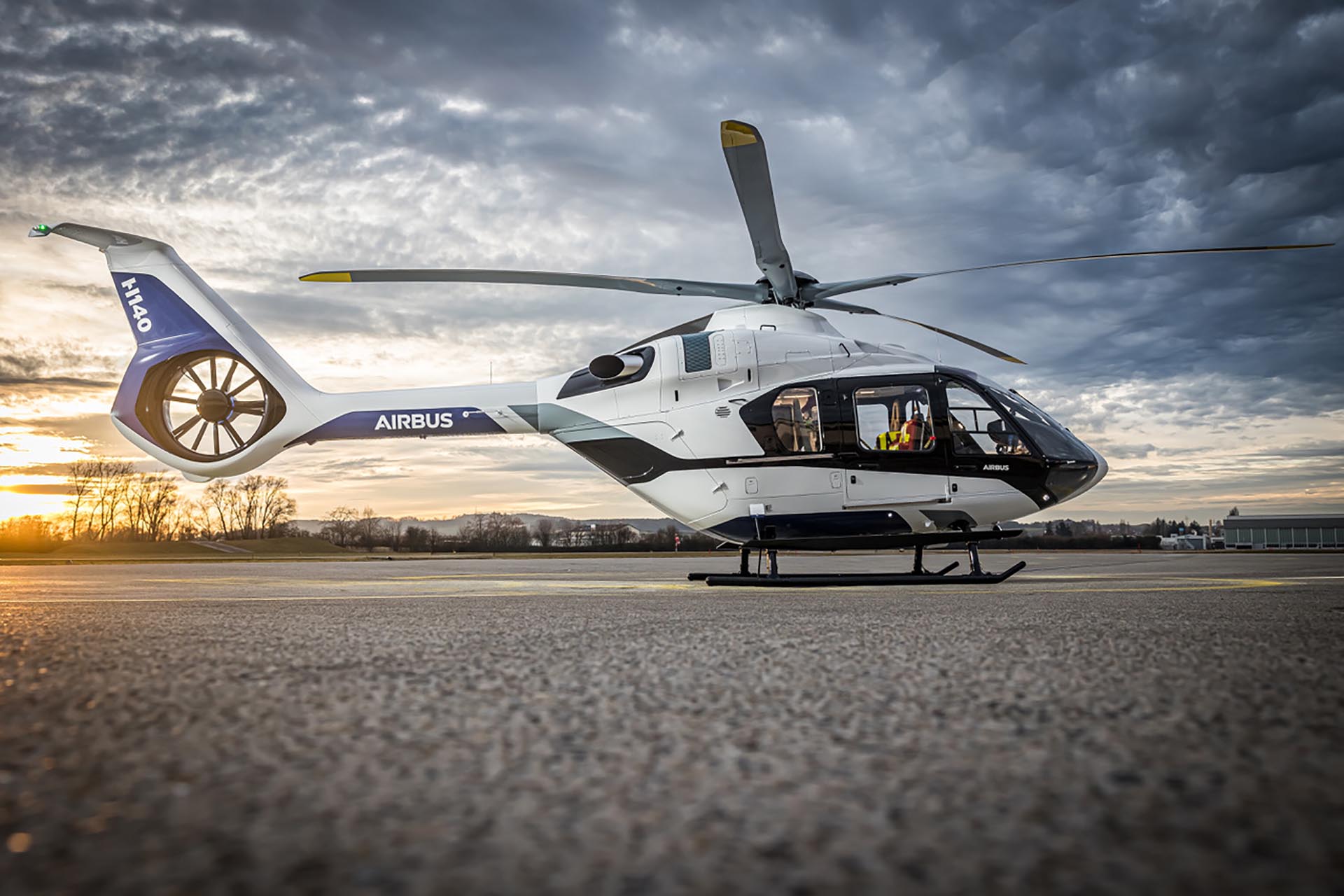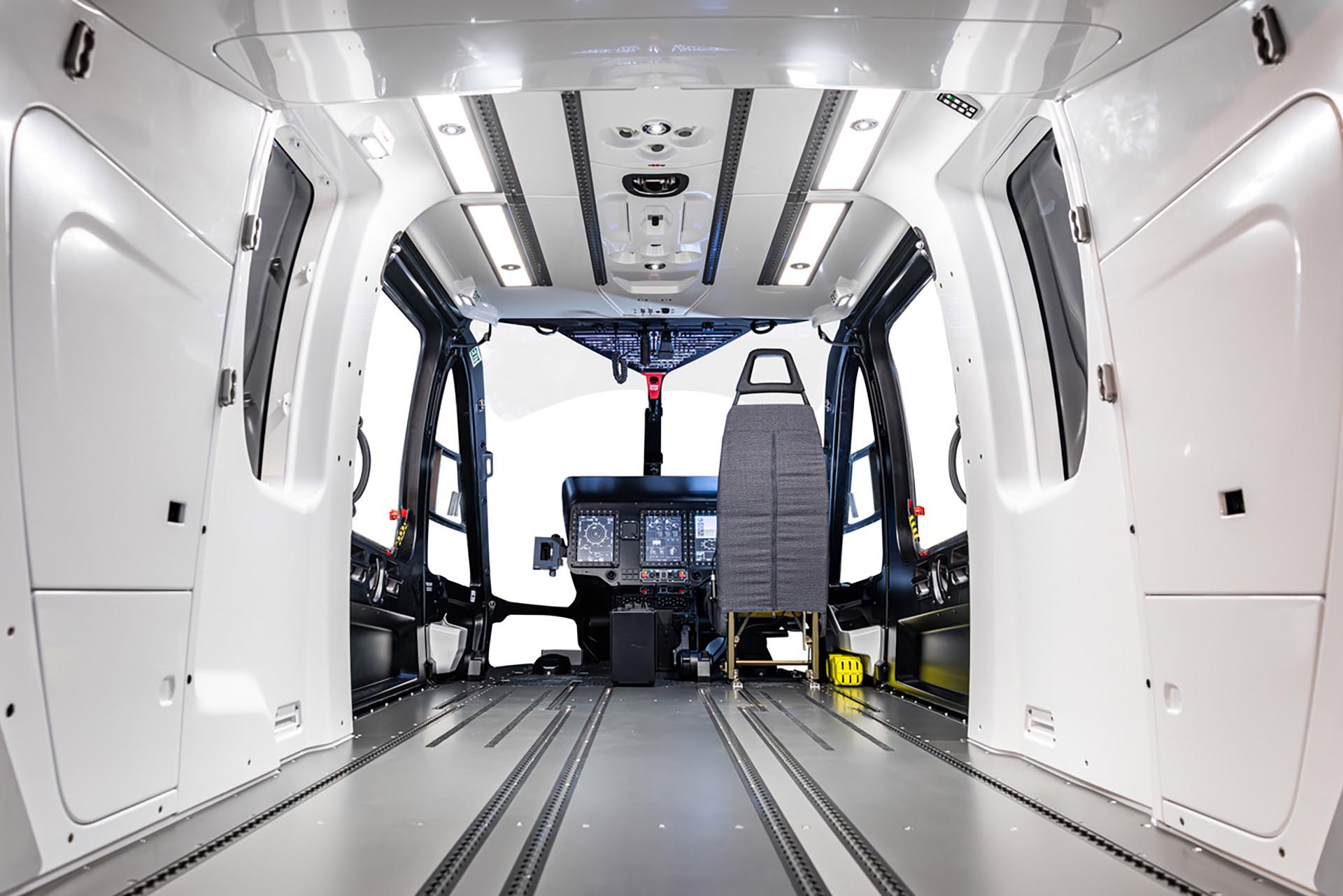In the week before the rotorcraft industry descended upon Dallas for the freshly rechristened Verticon, I was lucky enough to be amongst a small group of aviation journalists invited by Airbus to a 'pre-Verticon Media Session' at Airbus Helicopters' sprawling Donauworth facility, about 50 miles to the north-west of Munich in Bavaria. The itinerary was kept deliberately vague. After a robust and engaging discourse with the company’s CEO, Bruno Even, over the company’s performance over the previous financial year, and a deep dive into the decision to cease development work on the City Airbus NextGen after the current flight test plan is completed, the key rationale for our visit was revealed - under the caveat of a strict embargo.
With a flourish, the H140 was revealed.
The model number tells you exactly where it sits in terms of size in the Airbus product range, between the H135 and H145. What it doesn't immediately reveal is the 'why', and the 'how'. After introducing the aircraft, Bruno ceded the floor to Dirk Petry, Executive Vice President and Head of the H135 program, to describe both the 'why' and the 'how' in greater detail, and also to explain, from Airbus Helicopters' perspective the 'why now?'

Dirk started with some detail on the H140's characteristics. It would, perhaps, be trite to describe the aircraft as a 'greatest hits' package of the H135 and H145 families - but, nonetheless, such a summary carries no little validity. The cabin is bigger than a H135, but smaller than a H145 - (just) staying within the confines of the FAR/CS 27 Small Rotorcraft category. It reuses a slightly modified version of the new 5-Blade rotor system fitted to the H145, bringing with it a reduced noise profile and smoother ride. Dirk described the company’s philosophy in developing the aircraft as merging separate threads of 'performance, maturity and technology' - the aircraft being something of a nexus of Airbus' recent products and technology initiatives.
The performance aspect is covered by the introduction of the new Safran Arrius 2E engines to complement the 5-bladed rotor. The 2Es offer more performance for the same fuel burn, some 7% over the legacy engines, and all while completing a 'virtuous circle' of reducing overhaul costs. The additional installed power has also allowed the airframe to grow, especially in height - internal space is now some 20% bigger than the H135 at 6.1m3 providing additional room, including an extra seat if required - and offering over 400lbs of extra disposable payload for crew, passengers, baggage, role equipment or fuel. The extra power and some aerodynamic 'tweaks' (such as the sculpted 'T-Tail' horizontal stabiliser atop the fin) also enable the H140 to have a notable increase in speed - Dirk points out that the H135's VNE is 140kts and the trials program has already seen the H140 achieve a design VNE of 155.Kts at Max Gross Weight in level flight, and according to one of the Test Pilots we inspected the prototype with, it's flown faster in a dive for envelope measurement trials.
Maturity leverages the lineage of the EC/H135 - and despite saying 'H140' on the side, the Type Certificate will state the machine is a variant of the EC135T – i.e., 'Turbomeca' (ie Safran) engined. At the moment no 'EC135P' (Pratt & Whitney) derivative is available, as no alternate engine will be offered, at launch at least. This enables Airbus to bring the aircraft to market quickly, and economically, without the expense and delay of a long and drawn out certification program. It's very much an Airbus approach; after all, the H145 is still, technically, a BK117...

In terms of technology, the H140 will feature extensive use of composites, a refreshed Fenestron design with fewer stators, and leans heavily upon the lessons learned from the 'Bluecopter' research platform - most obviously the 'T-Tail' on the Fenestron configuration. The Tail configuration, Dirk notes, buys bout 80Kg of the payload increase by itself. Airbus' fleet of Trials Platforms have all helped in maturing technology that is now manifesting itself on the aircraft.
The 'why' was relatively simple to answer - and they are at the heart of the changes over the basic H135 design. As a result of many conversations with EMS and HEMS users, it became clear to Airbus that a larger cabin, with less obstructions, greater headroom and more modular fittings for medical equipment was required. Airbus, with some careful repackaging has managed to achieve all of this - and by raising the height of the tail boom slightly, access to the clamshell doors at the back for stretcher load / offload has been made much easier for EMS crews. The re-routing of flight control runs to an arrangement more similar to the H145, has enabled the pillars to be removed from the cabin - enabling much more freedom for EMS practitioners to work with their patients. Dirk continued by saying the primary driver for the aircraft was the 'demand signal' from the EMS community. They wanted a bigger, faster, more economical aircraft without the additional costs of migrating to a FAR / CS29 Large Rotorcraft. Airbus was keen to point out that they've also designed the aircraft to have a 'rapid start' capability to respond to EMS 'shouts'.

The Trials Plan is progressing well - and largely unnoticed except to a few sharp-eyed observers. The first flight was as long ago as June 2023. Test Campaigns for 2025 include a 'hot and high' section this summer, and then Cold Weather at the end of the year. The first prototype, which we had the opportunity to inspect in the privacy of the Customer Centre, will in time be joined by two additional aircraft to help with the testing and certification requirements. Launch customers can expect to see the first EMS optimised aircraft delivered in 2028.
As to the 'why now?' - Bruno Even was characteristically open. 'The market is back, and the demand is there...' he began, before explaining that the market is now, after a 3-4 year slump, finally back above pre-COVID 19 pandemic levels. The cost equation for EMS operators, many of which are of course charities, encourages them to do more with less - the H140, Airbus posit, is the result of listening to the customer and giving them what they want.
While assuredly designed with the needs of the EMS market in mind, Airbus is at pains to explain that the H140 offers other benefits in the 'Light Twin' class. The redesigned cabin enabled the fitting of two rear cabin windows - which have often been a simple discriminator between the H135 and H145. Moreover, these windows are large enough to be categorised as Emergency Exits. This is a significant factor for operators considering using the aircraft for Offshore roles, such as operations to/from Oil and Gas facilities, windfarms or Search & Rescue. Flotation gear has already been designed to enable the H140 to operate safely in a maritime environment.
The improved disposable payload, combined with Helionix cockpit, 4-axis Auto Pilot and dual channel FADEC (which I had the opportunity to sample while flying the H145M later in the visit) all point towards a capable light utility machine, including aerial firefighting - or, perhaps, 'heli sniping' small fires with a bucket system. The larger cabin and increased payload offer VIP and Corporate users a number of options. The H140 can now accommodate six passengers in comfort as opposed to the H135's five, perhaps enabling an improved blend of customers and luggage - and the smoother ride, reduced noise profile and higher cruise speed will doubtless all prove popular. Airbus announced that the first Commercial Air Transport (CAT) H140s are expected to be delivered in 2029, with dedicated Corporate machines a year later.
Interestingly, at the moment, Airbus is not considering a military optimised 'M' version of the H140. Their response is that H145M is proving popular in that segment, but acknowledge that the increased performance, reduced operating costs and larger cabin may be attractive to Police and other para-republic organisations. The production plan for the H140 follows the established H135 and H145 process, with a number of Airbus facilities producing sub-components that will be then shipped to the Donauworth Final Assembly Line (FAL). At the moment, Airbus envisages running the H140 FAL alongside the H135 and H145 lines - leveraging the similarities between the designs, and the familiarity of their existing workforce.
The H140 has arrived. Doubtless a sleek and contemporary take on the light twin segment. As an EMS machine, it looks at prima facie to be a winner - evinced by the pre-orders and launch customers. As for the other roles, Airbus faces stiff competition from both within and without. Only time will tell is the H140 is 'different enough' not to steal too many sales from its bigger and smaller stablemates, while continuing to take the fight to Leonardo and Bell.

 HOME
HOME


